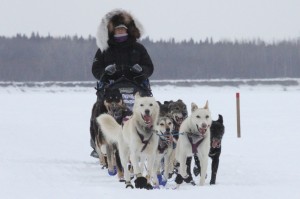Today, a week into the changed sky of daylight savings, broke clear and cold. After days of melt, yesterday’s front had scattered a scrim of snow that purified the old drifts, and the returned cold had tightened them. Another day of winter, though one so fully lit as to deceive through the windows. But once I stepped outside and felt the air’s tensile strength, I knew winter was back, if only for a short stay.
“Before I go,” this day seemed to say, “think about the gifts a winter day brings. Instead of pining for spring, breathe in the immediate; consider the cold day.”
A while ago, during my winter reading of Thoreau’s 1854 journal, I’d come across paean to such a day:
To make a perfect winter day like this, you must have clear, sparkling air, with a sheen from the snow, sufficient cold, little or no wind; and the warmth must come directly from the sun. It must not be a thawing warmth. The tension of nature must not be relaxed. The earth must be resonant if bare, and you hear the lisping tinkle of chickadees from time to time and the unrelenting steel-cold scream of the jay, unmelted, that never flows into song, a sort of wintry trumpet, screaming cold; hard, tense, frozen music, like the winter sky itself; in the blue livery of winter’s band. It is like a flourish of trumpets to the winter sky. There is no hint of incubation in the jay’s scream. Like the creak of a cart-wheel. There is no cushion for sounds now. They tear our ears. – Journal, 2/12/54
Sure enough, the jay screamed; and the chickadees gathered in tiny riot around the birdfeeder; even in stripes where the sun had uncovered the grass, the ground was hard.
On my way to the woods, I stopped a number of times and listened. Thoreau was right – the was no “cushion for sounds now.” Each bird had immediate voice. A distant motor thrummed as if nearby. Somehow, as I walked on, I was nearer to the crunch of my steps. “The tension of nature” was surely not “relaxed.”
But the day changed, as the late season will, and during an afternoon walk, this little song of shift blew in. We were walking through an expanse of fields not far from the sea, and I was watching the clouds in the northeast. They boiled up dark, and the wind seemed to draw them on; from their bellies indistinct vapor seemed to trail. In summer that mist would be veils of rain. “That could be snow,” I said. And, some minutes later, it was – at first, one flake and another; then, a thickened froth. I could hear the little slaps on the left side of my face as the water-heavy flakes hit.
In two minutes, the upwind, left sides of our bodies were white like tree trunks facing a storm. We reached the car, shook off the snow and climbed in to watch the tantrum pass. The wind rocked the car, and from our inside eddy we watched the fields whiten like a time-lapsed photo.
Then it was done. Five minutes later the snow had melted; winter was whistling away, a whole season in a day. Oddly, there had been “incubation” in this flurried snow. The light in the sky was growing again; in a few days the vernal equinox would balance us before spring.


